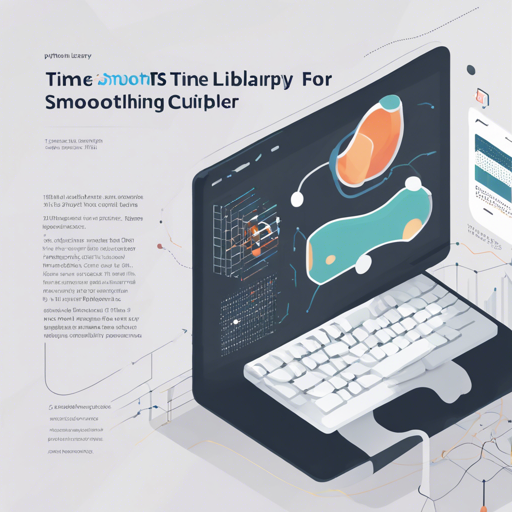Time-series data is everywhere, from stock prices to daily temperatures. Smoothening this data can help identify trends and detect anomalies. The tsmoothie library in Python is an excellent tool for smoothing time-series data and detecting outliers efficiently. In this article, we will dive into the primary functionalities of tsmoothie, provide step-by-step guides on how to use it, and offer troubleshooting tips!
Getting Started with tsmoothie
First and foremost, you need to install the library. Here’s how to do it:
pip install --upgrade tsmoothieWith NumPy, SciPy, and simdkalman as dependencies, tsmoothie is easy to get up and running, provided you have Python 3.6 or above.
Key Features of tsmoothie
tsmoothie offers a plethora of smoothing techniques, including:
- Exponential Smoothing
- Convolutional Smoothing with various window types like Hanning, Hamming, and Blackman
- Spectral Smoothing with Fourier Transform
- Polynomial Smoothing
- Spline Smoothing (linear, cubic, natural cubic)
- Gaussian Smoothing
- Binner Smoothing
- LOWESS
- Seasonal Decompose Smoothing
- Kalman Smoothing with customizable components
These techniques allow for a comprehensive analysis of time-series data and can effectively identify outliers and anomalies.
Example Usage: Smoothing Time Series
To give you a clearer idea, let’s use an analogy. Think of your time-series data as a bumpy road. Smoothing your data is akin to using a road grader to make that surface more even. You can opt for different tools (or smoothing techniques) to achieve your desired road quality.
Here’s an example of using the Lowess Smoother with the tsmoothie library:
import numpy as np
import matplotlib.pyplot as plt
from tsmoothie.utils_func import sim_randomwalk
from tsmoothie.smoother import LowessSmoother
# Generate 3 random walks of length 200
np.random.seed(123)
data = sim_randomwalk(n_series=3, timesteps=200, process_noise=10, measure_noise=30)
# Perform smoothings
smoother = LowessSmoother(smooth_fraction=0.1, iterations=1)
smoother.smooth(data)
# Generate intervals
low, up = smoother.get_intervals(prediction_interval)
# Plot the smoothed timeseries with intervals
plt.figure(figsize=(18, 5))
for i in range(3):
plt.subplot(1, 3, i + 1)
plt.plot(smoother.smooth_data[i], linewidth=3, color='blue')
plt.plot(smoother.data[i], color='black', linestyle='dotted')
plt.title(f'Time Series {i + 1}')
plt.xlabel('Time')
plt.fill_between(range(len(smoother.data[i])), low[i], up[i], alpha=0.3)
plt.show()This code generates three random walks as simulated time-series data, applies smoothing, and plots the results with intervals to visualize uncertainty.
Troubleshooting Tips
Even with robust libraries like tsmoothie, you might encounter challenges. Here are some troubleshooting ideas:
- Error importing tsmoothie: Ensure you’ve installed tsmoothie correctly using pip and that your Python version is compatible.
- Unexpected results: Review your chosen smoothing techniques and parameters; different methods of smoothing will yield different results.
- Performance issues: Monitor the size of your dataset. Large datasets may require more computational resources.
For more insights, updates, or to collaborate on AI development projects, stay connected with fxis.ai.
Conclusion
With its diverse range of smoothing techniques, tsmoothie is a powerful library for anyone dealing with time-series data. Make sure to explore the different smoothers it offers and experiment with various parameters to achieve the best insights from your data.
At fxis.ai, we believe that such advancements are crucial for the future of AI, as they enable more comprehensive and effective solutions. Our team is continually exploring new methodologies to push the envelope in artificial intelligence, ensuring that our clients benefit from the latest technological innovations.

